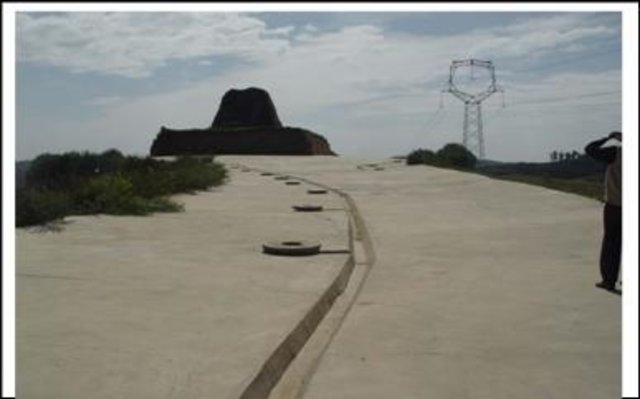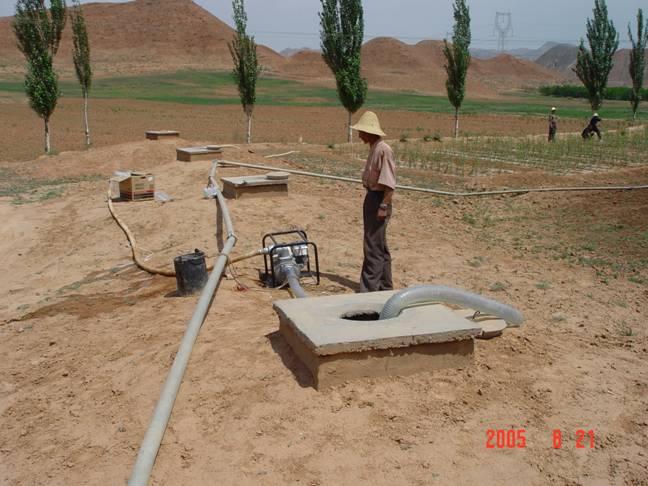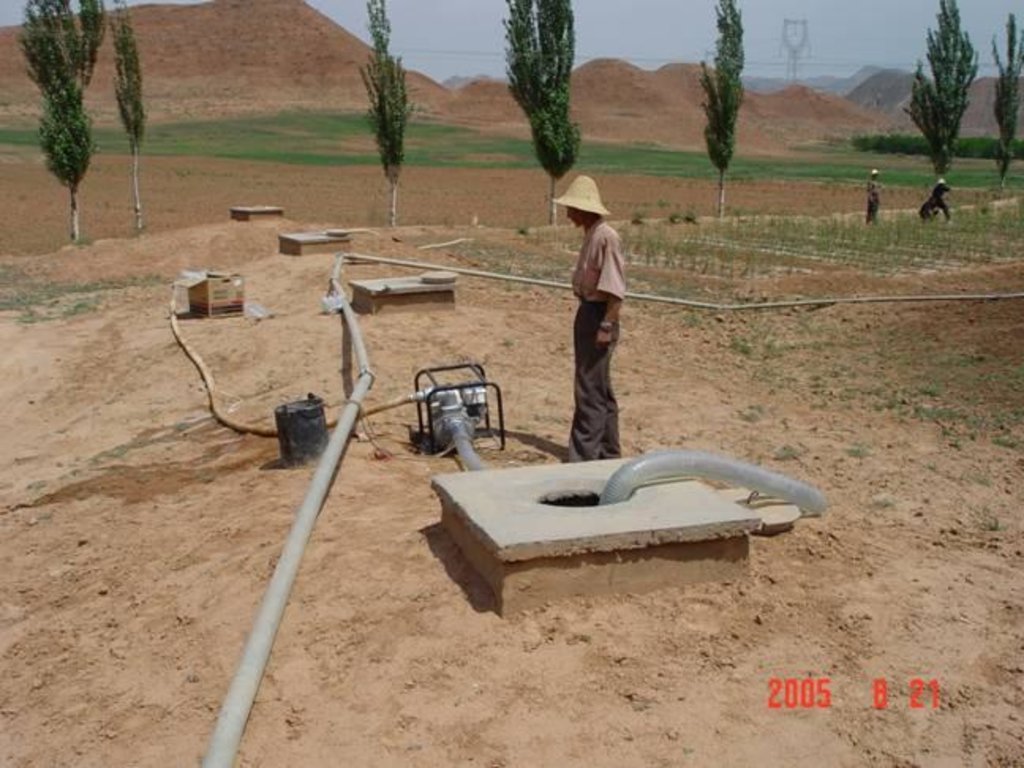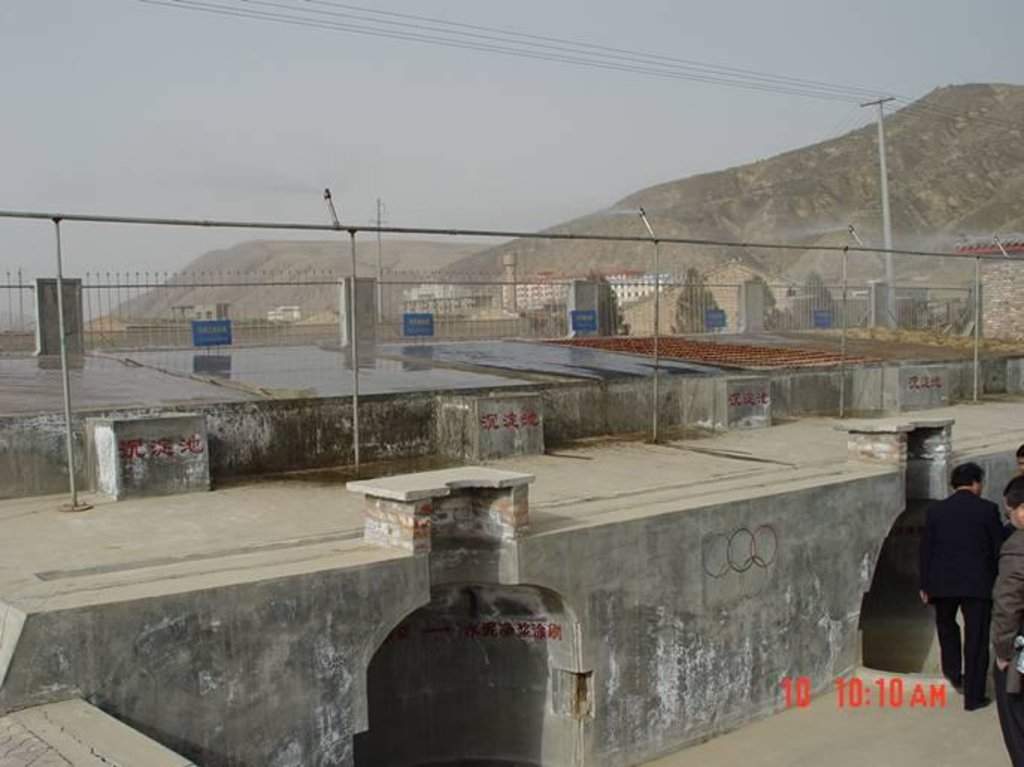Rainwater Cellars introduced through government support [中国]
- 创建:
- 更新:
- 编制者: Anna Schuler
- 编辑者: –
- 审查者: Laura Ebneter
approaches_2432 - 中国
查看章节
全部展开 全部收起1. 一般信息
1.2 参与方法评估和文件编制的资源人员和机构的联系方式
SLM专业人员:
Wang Yaolin
GEF/OP12 Project Implementation Office of Gansu (Gamsu Sand Control Research Institute)
Chen Zhengbin, Forestry Bureau of Anding District, Dingxi City, Gansu Province
中国
有助于对方法进行记录/评估的机构名称(如相关)
CDE Centre for Development and Environment (CDE Centre for Development and Environment) - 瑞士有助于对方法进行记录/评估的机构名称(如相关)
GEF/OP12 Gansu Project (GEF/OP12 Gansu Project) - 中国1.3 关于使用通过WOCAT记录的数据的条件
编制者和关键资源人员接受有关使用通过WOCAT记录数据的条件。:
是
1.4 SLM技术问卷的参考

Rainwater Cellars [中国]
The use of courtyard, roof, road surface, slope, etc. as catchments to collect rainwater for underground water storage for future supply of cropland irrigation as well as drinking water for humans and livestock.
- 编制者: Anna Schuler
2. SLM方法的描述
2.1 该方法的简要说明
Government takes the lead and propelled by project, the rainwater collection for irrigation technology scales up by demonstration.
2.2 该方法的详细说明
该方法的详细说明:
Dingxi County of Gansu Province is short of water resource. There is an old saying it's hard to exchange a cup of water for a cup of oil in Anding of Dingxi. During drought years, drinking water became a crisis and people had to walk dozens of miles to get water. With no self-relief capacity the local people live a hard life. To resolve water shortage, the most realistic method is to tap into the potential of local precipitation. Under the support of the Gansu provincial government, researches on rainwater collection were conducted during the period from 1988 to 1992 and water cellar technology was proven technically and economically feasible with its functions in preventing erosion, developing arid cropland and ecosystem recovery.
In 1994, the government disseminated water cellar technology in the northwestern part of the county covering 14 townships and 4376 households. After completion, the drinking water supply problem was mitigated for 22,000 people and 8700 animals. In 1995, a severe drought hit Gansu and the provincial government immediately initiated “1-2-1 Rainwater Collection Project, under which the government supplied cement and the local people provided sand/stone and labor to build water cellars. According to this project each household should build one water catchment with an area of100m2 made by concrete cement and two water cellars and one backyard cashcrop forest. By the end of 2000, a total of 57800 households were involved in the project to provide drinking water to 60,900 people and 333,900 heads of livestock. In addition, dryland farming has seen great development. Since 1996, water cellar technology has been diversified and evolved. The water collection fields have extended from roof and courtyard to road surface, ditch, hillside, land brink, etc and the application has been widened to scale livestock farming, spot watering and conservation irrigation of farmland based on the achievement of the 1-2-1 rainwater collection project. Moreover, water cellar technology has been gradually combined with greenhouse production, tourism agriculture, etc to form a development model integrating rainwater conservation irrigation, dryland farming and improved livelihood standards.
2.3 该方法的照片
2.5 采用该方法的国家/地区/地点
国家:
中国
区域/州/省:
Gansu
有关地点的进一步说明:
Anding
2.8 该方法的主要目的/目标
Aims are to: establish a extension mechanism that promotes sustainable development and involves farmers participation; improve the farmers' knowledge about rainwater utilization; strengthen farmer participation and their confidence in overcoming difficulties; solve drinking water problem; eliminate poverty
The SLM Approach addressed the following problems: lack of effective grass-roots organization; backward economy and lack funds; farmers in lack of the knowledge of water cellar establishment and management; short of drinking water for human and domestic animals
2.9 推动或妨碍实施本办法所适用的技术的条件
财务资源和服务的可用性/可得性
- 阻碍
Found shortage: Farmers cannot afford water cellar construction
Treatment through the SLM Approach: The dissemination approaches include trial operation, demonstration, training, household visit for publicity, media (TV), technical handouts and posters. The key organizer of the extension is the water resources bureau of Anding District.
其他
- 阻碍
Knowledge/technology shortage: Short of knowledge of rainwater high efficiency utilization and related agricultureal technology
Treatment through the SLM Approach: Demonstration and training
3. 相关利益相关者的参与和角色
3.1 该方法涉及的利益相关者及其职责
- 当地土地使用者/当地社区
- SLM专家/农业顾问
SWC experts
- 国家政府(规划者、决策者)
3.2 当地土地使用者/当地社区参与该方法的不同阶段
| 当地土地使用者/当地社区的参与 | 指定参与人员并描述活动 | |
|---|---|---|
| 启动/动机 | 外部支持 | Meetings, household visits |
| 计划 | 外部支持 | Participate in the survey and site location arrangement |
| 实施 | 外部支持 | Labor input for technological implementation |
| 监测/评估 | 外部支持 | Observation, collaboration with the survey of the technicians |
| Research | 外部支持 | Participate in the surveys |
3.4 有关SLM技术选择的决策
是否就技术的选择做出了决定?:
- Land users and decision makers
解释:
Decisions on the method of implementing the SLM Technology were made by land users alone (self-initiative / bottom-up). Land users or village leaders decided to build water cellars.
4. 技术支持、能力建设和知识管理
4.1 能力建设/培训
是否为土地使用者/其他利益相关者提供培训?:
是
明确受训人员:
- 土地使用者
培训形式:
- 示范区域
- 公开会议
- 课程
培训形式:
- publicity brochures
涵盖的主题:
water cellar building and management, irrigation etc.
4.3 机构强化(组织发展)
是否通过这种方法建立或加强了机构?:
- 是,适度
具体说明机构的强化或建立程度:
- 本地
- capacity building
提供进一步细节:
the technology application strengthened the capacity building of the local water resources departments. Application of the technology helped other projects related to water conservancy and poverty reduction.
4.4 监测和评估
注释:
There were None changes in the Technology as a result of monitoring and evaluation: The technology itself has not evolved from sole water cellar development to an assembled technology with others. The financial resources o support water cellars have been changed from sole government to social funds, moreover, the farmers would actively asks for building water cellars.
4.5 研究
研究是该方法的一部分吗?
是
明确话题:
- 社会学
- 经济/市场营销
- 生态学
提供进一步的细节,并指出是谁做的研究:
The research is conducted by provincial level researchers on the ecological, economic, social benefits of the water cellars, mainly.
5. 融资和外部物质支持
5.1 该方法中SLM组成部分的年度预算
注释(例如主要的资助来源/主要捐助者):
Approach costs were met by the following donors: government (Local founds): 15.0%; other: 85.0%
5.2 为土地使用者提供财政/物质支援
土地使用者是否获得实施该技术的财政/物质支持?:
是
5.3 对特定投入的补贴(包括劳动力)
- 建筑
| 具体说明哪些投入得到了补贴 | 程度如何 | 对补贴做出具体说明 |
|---|---|---|
| concrete cement | supplied free of charge by project | |
注释:
Labor force is not paid
5.4 信用
是否根据SLM活动的方法给予信用值?:
是
对条件(利率、回报等)进行具体说明:
repayment conditions: credits are sometimes used, with interest rate similar with that of commercial loan.
6. 影响分析和结论性陈述
6.1 方法的影响
the technology intercepts runoffs, solves deficiency of water resources, and raises land productivity.
Did other land users / projects adopt the Approach?
- 否
- 是,很少
- 是,中等
- 是,支持力度很大
it has been adopted extensively by neighboring provinces. Chinese Women's Federation has initiated the public welfare program named 'Mothers Water Cellar' in northern China.
6.4 该方法的长处/优点
| 编制者或其他关键资源人员认为的长处/优势/机会 |
|---|
| solve the problems of aridness and drinking water for human and livestock (How to sustain/ enhance this strength: continued project support) |
| strong extension mechanism (How to sustain/ enhance this strength: further strengthen the role of technical extension organizations) |
| Improve farmer's life (How to sustain/ enhance this strength: develop dryland agriculture industry) |
6.5 该方法的弱点/缺点以及克服它们的方法
| 编制者或其他关键资源人员认为的弱点/缺点/风险 | 如何克服它们? |
|---|---|
| high investment for technology adoption | use of micro-credits, optimized use of farming technology for high benefit agriculture. |
| weak monitoring and evaluation | establish participatory monitoring and evaluation mechanism. |
7. 参考和链接
7.1 方法/信息来源
- 实地考察、实地调查
- 与土地使用者的访谈
链接和模块
全部展开 全部收起链接

Rainwater Cellars [中国]
The use of courtyard, roof, road surface, slope, etc. as catchments to collect rainwater for underground water storage for future supply of cropland irrigation as well as drinking water for humans and livestock.
- 编制者: Anna Schuler
模块
无模块




